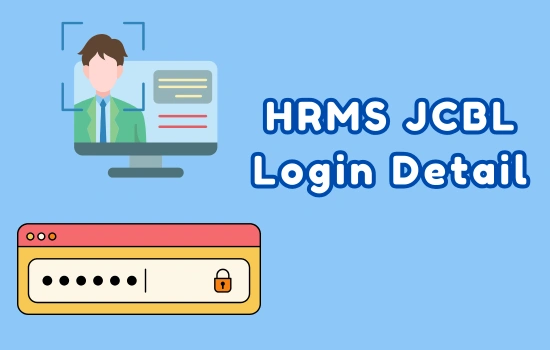In today’s fast-paced workplace, Human Resource Management Systems (HRMS) play an integral role in streamlining HR operations and improving employee engagement. HRMS JCBL is a comprehensive platform that empowers employees through its Employee Self-Service (ESS) Portal, enabling them to manage essential HR-related tasks such as accessing payroll, submitting leave applications, and updating personal details independently.
This guide provides a detailed walkthrough of the HRMS JCBL ESS Portal, from login procedures to troubleshooting common issues, and tips for leveraging its features effectively.
What is HRMS JCBL ESS Portal?

The HRMS JCBL ESS Portal is a secure and user-friendly platform that provides employees with direct access to HR tools and services. It reduces the dependency on HR teams for routine tasks, making the HR experience seamless and efficient for employees.
Key Features of HRMS JCBL ESS Portal
- Payroll Management: View and download payslips, tax details, and salary components.
- Leave and Attendance: Apply for leave, check balances, and monitor attendance records.
- Profile Updates: Update personal details, emergency contacts, and banking information.
- Company Announcements: Stay informed about organizational updates, policies, and events.
- Performance Reviews: Access appraisals and provide feedback.
Benefits of Using HRMS JCBL ESS Portal
- Convenience: Access HR services from anywhere, at any time.
- Efficiency: Complete routine tasks like leave applications and payroll downloads quickly.
- Transparency: Gain real-time insights into payroll, attendance, and performance metrics.
- Employee Empowerment: Manage HR activities independently without needing HR intervention.
Step-by-Step Guide to Logging into HRMS JCBL ESS Portal
Step 1: Access the Portal
- Open a web browser (recommended: Google Chrome, Mozilla Firefox, or Microsoft Edge).
- Enter the HRMS JCBL ESS Portal URL provided by your organization in the address bar.
- Press Enter to navigate to the login page.
Step 2: Enter Your Credentials
- Username/Employee ID: Use the username or employee ID provided by your HR department during onboarding. This is often your employee code or corporate email address.
- Password: Input your password. For first-time users, this will typically be a temporary password assigned by HR.
Click the “Login” button to proceed.
Step 3: Authenticate Your Identity
To ensure secure access, the portal may require additional authentication:
- One-Time Password (OTP): An OTP may be sent to your registered email or mobile number. Enter the OTP in the designated field.
- Security Questions: You might need to answer predefined security questions for identity verification.
Step 4: Change Password (For First-Time Users)
If logging in for the first time:
- Enter your temporary password in the “Current Password” field.
- Create a new password adhering to the following guidelines:
- At least 8 characters.
- Includes uppercase, lowercase, numbers, and special symbols.
- Avoid using easily guessable information like names or birthdays.
- Confirm the new password and save the changes.
Step 5: Explore the Dashboard
After a successful login, you’ll be redirected to the ESS portal dashboard. The layout may vary based on your organization’s configuration, but typically includes:
- Quick Links: Access frequently used features like payslips, leave requests, and attendance records.
- Profile Management: Update personal and professional information.
- Notifications: View alerts for pending tasks, approvals, and company announcements.
Troubleshooting Common Login Issues
1. Forgotten Password
- Click the “Forgot Password” link on the login page.
- Enter your registered email or employee ID.
- Follow the instructions sent to your email to reset your password.
2. Account Locked
- After multiple failed login attempts, your account may be locked. Contact your HR or IT support team to unlock it.
3. Invalid Credentials
- Double-check your username and password for errors.
- Ensure Caps Lock is off and that your keyboard language settings are correct.
4. Browser Compatibility
- Use an updated version of your web browser for optimal performance.
- Clear the browser cache and cookies if the portal fails to load.
5. Portal Downtime
- If the portal is inaccessible, confirm with your HR or IT team whether maintenance or server issues are causing the problem.
Best Practices for Using HRMS JCBL ESS Portal
- Secure Your Credentials
- Create a strong, unique password and update it periodically.
- Avoid sharing your login information with anyone.
- Log Out After Use
- Always log out of the portal after use, especially on shared or public devices.
- Update Your Profile Regularly
- Ensure your personal details, banking information, and emergency contacts are accurate and up to date.
- Monitor Notifications
- Check the portal frequently for updates, announcements, and pending tasks.
- Use Mobile Access
- If your organization offers a mobile app for HRMS JCBL, download it for convenient on-the-go access to ESS features.
Advantages of HRMS JCBL for Employees
- Streamlined Processes: Simplifies routine HR tasks for employees and reduces HR workload.
- Enhanced Transparency: Provides visibility into payroll, attendance, and leave balances.
- Improved Communication: Keeps employees informed about organizational updates and events.
- Increased Engagement: Empowers employees to take control of their HR needs independently.
Conclusion
The HRMS JCBL ESS Portal is a powerful tool for employees, offering an efficient, transparent, and user-friendly way to manage HR-related tasks. By following the steps outlined in this guide, employees can navigate the portal seamlessly and maximize its features.
For any issues or additional support, employees are encouraged to contact their HR or IT teams. Take full advantage of HRMS JCBL to streamline your HR interactions and focus on your professional growth!
Hina Abbasi is Editor and a passionate sports and entertainment content writer at WinnersMaze.com. Hina’s expertise spans across a wide range of sports, and interest in many TV shows allowing her to deliver insightful analysis and compelling stories that resonate with readers.

